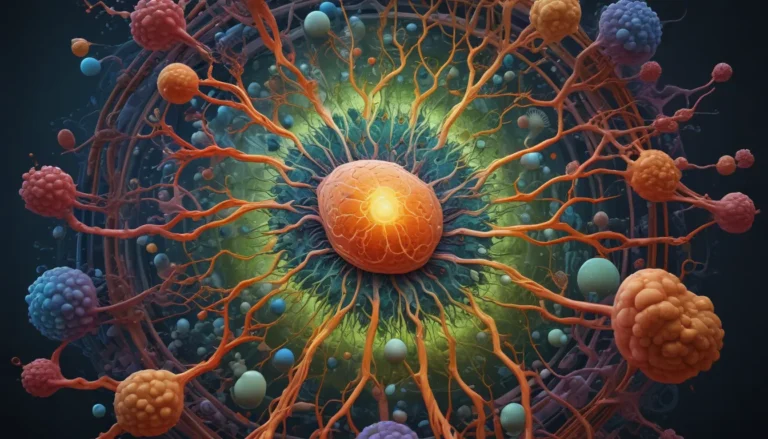A Note About Images: The images used in our articles are for illustration purposes only and may not exactly match the content. They are meant to engage readers, but the text should be relied upon for accurate information.
In today’s rapidly changing world, the search for sustainable energy sources has never been more crucial. Among the various clean energy solutions available, bioenergy stands out as a versatile and promising option. Derived from organic materials such as plants, animals, and their byproducts, bioenergy offers a multitude of benefits, ranging from reducing greenhouse gas emissions to supporting rural development. Let’s delve into the world of bioenergy and explore 18 astonishing facts that shed light on its importance, potential, and impact on the environment and society.
Unveiling the Essence of Bioenergy
Bioenergy, at its core, is energy sourced from living or recently living organic materials. This renewable energy source encompasses a wide array of forms, including biomass, biogas, biofuels, and bioelectricity. Its versatility allows for a range of applications, from heating and cooking to electricity generation and transportation fuels.
The Environmental Benefits of Bioenergy
In a world grappling with climate change, bioenergy serves as a beacon of hope. By reducing greenhouse gas emissions compared to fossil fuels, bioenergy emerges as a cleaner and more sustainable energy option. It also promotes waste management by utilizing organic waste materials like agricultural byproducts, food scraps, and sewage sludge, thus reducing the strain on landfills and encouraging recycling efforts.
A Catalyst for Rural Development
Bioenergy plays a vital role in driving economic growth in rural communities. By harnessing locally available biomass resources, bioenergy production creates job opportunities and stimulates economic development in traditionally underserved areas. This not only contributes to the livelihoods of rural populations but also fosters a sense of self-sufficiency and resilience.
Harnessing Diverse Feedstocks for Bioenergy Production
The beauty of bioenergy lies in its ability to be derived from various feedstocks, ranging from conventional crops like corn, sugarcane, and soybeans to dedicated energy crops such as switchgrass and miscanthus. This diversity ensures a sustainable and adaptable approach to meeting energy demands while minimizing environmental impact.
Paving the Way for Energy Independence
Bioenergy provides nations with an opportunity to reduce their reliance on imported fossil fuels, thereby enhancing energy independence and resilience. By tapping into renewable and locally available resources, countries can secure a more stable and self-sufficient energy future.
A Timeless Source of Energy
While modern technologies have propelled bioenergy into the limelight, the concept of deriving energy from organic sources is not new. Throughout history, bioenergy sources such as wood and dung have been utilized for heating and cooking purposes, laying the groundwork for today’s innovative bioenergy advancements.
Spearheading the Fight Against Climate Change
Amidst growing concerns over climate change, bioenergy emerges as a crucial ally in the battle against global warming. Through the utilization of carbon-neutral feedstocks and improved production processes, bioenergy has the potential to significantly reduce greenhouse gas emissions and mitigate the adverse effects of climate change.
Nurturing Soil Health Through Bioenergy Production
One often-overlooked benefit of bioenergy is its positive impact on soil fertility. By returning organic residues from bioenergy production back to the soil, this energy source helps improve soil quality, enhance agricultural productivity, and foster sustainable land management practices.
The Evolution of Bioenergy Technologies
As technology advances at a rapid pace, bioenergy technologies are constantly evolving to enhance efficiency and sustainability. Ongoing research and development efforts are focused on optimizing bioenergy production processes, paving the way for innovative advancements in the field.
Fostering a Circular Economy Through Bioenergy
Bioenergy serves as a cornerstone for promoting a circular economy, where resources are recycled and reused in a closed-loop system. By utilizing organic waste as feedstock for bioenergy production, this circular approach reduces waste generation, maximizes resource efficiency, and contributes to a more sustainable environment.
Enhancing Air Quality Through Clean Bioenergy Technologies
One of the key benefits of bioenergy lies in its ability to improve air quality. By replacing traditional biomass burning methods with cleaner bioenergy technologies, this renewable energy source helps reduce air pollution, creating healthier and more sustainable environments for all.
A Beacon of Hope for Off-Grid Communities
In areas where traditional energy grids are inaccessible, bioenergy emerges as a beacon of hope. By providing decentralized and reliable power sources, bioenergy offers off-grid communities a sustainable solution to meet their energy needs, thereby improving their quality of life and fostering economic growth.
Combining Tradition with Innovation: Integrating Bioenergy with Conventional Energy Systems
Bioenergy has the power to complement traditional energy systems, paving the way for a diversified and more resilient energy landscape. By integrating bioenergy technologies with existing infrastructure, countries can enhance their energy security and reduce their environmental footprint.
Advancing Waste Management in Urban Areas Through Bioenergy Solutions
Urban centers face a mounting challenge when it comes to waste management. Bioenergy presents a viable solution by utilizing organic waste to produce energy, thus reducing the burden on landfills, minimizing waste generation, and contributing to a cleaner and more sustainable urban environment.
Enlightening the Path Towards a Greener Future
The potential of bioenergy to shape a more sustainable and environmentally-friendly future is boundless. As we embrace the power of bioenergy and invest in research, development, and implementation of sustainable energy solutions, we pave the way for a cleaner, greener, and more resilient world for future generations to inherit.
Embracing the Future of Energy: A Call to Action
In conclusion, bioenergy stands at the forefront of renewable energy solutions, offering a path towards a cleaner and more sustainable future. By harnessing the power of nature and embracing innovative technologies, we have the opportunity to unlock the full potential of bioenergy and transition towards a more environmentally-friendly energy landscape. As we work together to invest in bioenergy and other renewable energy sources, we embark on a journey towards a brighter and more sustainable tomorrow.
FAQs: Unveiling the Mysteries of Bioenergy
-
What is bioenergy?
Bioenergy refers to energy derived from organic materials such as plants, crops, and agricultural waste through processes like combustion, fermentation, and gasification. -
How does bioenergy help the environment?
Bioenergy reduces greenhouse gas emissions, minimizes reliance on fossil fuels, and promotes sustainability by utilizing renewable energy sources. -
What are some common forms of bioenergy?
Common forms of bioenergy include biofuels (e.g., ethanol, biodiesel), biomass power plants, and biogas generated from anaerobic digestion of organic waste. -
Can bioenergy be used for transportation?
Yes, biofuels can serve as an alternative to traditional gasoline and diesel fuels, powering vehicles while reducing carbon emissions. -
Is bioenergy economically viable?
Advancements in technology and increased production scale have made bioenergy economically competitive, offering opportunities for rural development, job creation, and reduced energy costs in the long run. -
Are there limitations to bioenergy?
Sustainable bioenergy production requires careful considerations to prevent conflicts with food resources, deforestation, or negative impacts on biodiversity. Proper land management practices are crucial for responsible bioenergy development. -
Can bioenergy benefit off-grid areas?
Bioenergy provides a sustainable solution for off-grid communities, offering decentralized and reliable power sources to meet energy needs in remote regions.
As we navigate the intricacies of bioenergy and its transformative potential, let us join hands in embracing sustainable energy solutions and shaping a more vibrant, resilient, and environmentally-conscious future. Together, we can harness the power of bioenergy to illuminate our path towards a greener tomorrow.






